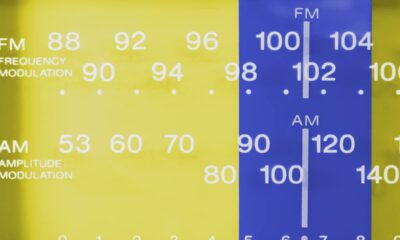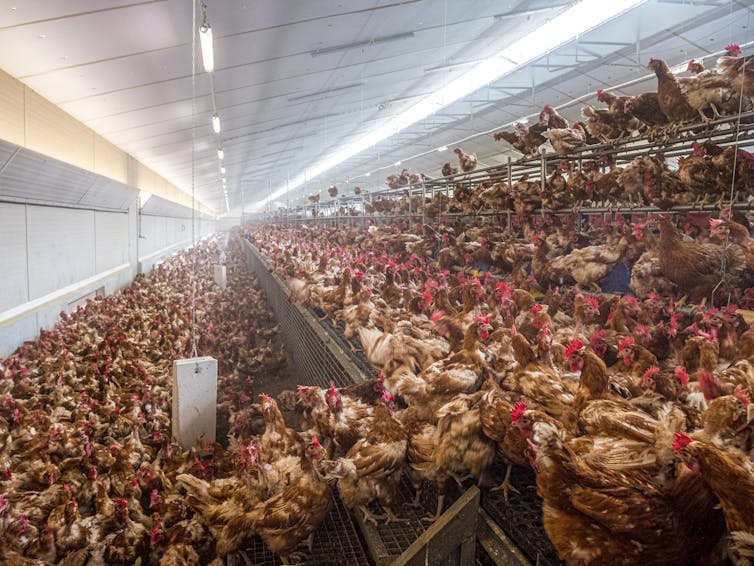
pick-uppath/Getty Images
Tom Kemeny, University of Toronto
One need only glance at headlines about Jeff Bezos, Elon Musk and other super-wealthy individuals to understand that wealth in America is increasingly concentrated in fewer and fewer hands. Inequality is sharply on the rise.
Until now, however, little has been known about where the richest households are located, which cities are the most unequal and how these trends have evolved.
In a new analysis I conducted with my colleagues, we reveal where wealth is most concentrated within and between communities, cities and states. The result is GEOWEALTH-US – the first data that tracks the geography of wealth in the United States and how it has changed since 1960.
The overall picture is worrying. The wealthiest cities in the U.S. are now almost seven times richer than the poorest regions, a disparity that has almost doubled since 1960. Meanwhile, especially in urban coastal areas, wealth has become highly concentrated in the hands of a few. The picture from the geography of wealth suggests we are even more divided than we thought.
Mapping inequality
To measure wealth locally, we built precise models of household wealth, applying sophisticated machine learning techniques to data from the Federal Reserve’s survey of consumer finances.
We then used the models to estimate wealth among households in the decennial census and American community survey, where we can identify where people live.
Experts define wealth as the difference between the value of a household’s assets – cash, real estate and stocks, for example – and its liabilities, including mortgages, student loans and credit card debt. Wealth is also called “net worth.”
Using GEOWEALTH-US, we show that the wealth distribution across the U.S. has transformed since 1960. Inequality between the nation’s flourishing urban centers and other areas of the country, especially in parts of the South and Midwest, is higher than it has ever been over the previous 60 years.
The expansion of wealth inequality is a challenge to the American Dream: the notion that, with hard work, opportunity and prosperity are accessible to all.
Wealth enables choice and stability. Poorer households have more trouble providing the best nutrition and education for their children. Additionally, people growing up in lower-wealth households are less likely to spur innovation in a field or start successful new businesses. Wealth also profoundly affects one’s health, leaving the least wealthy in our society significantly more vulnerable to premature death and disability.
Large wealth gaps between places
We analyzed average household wealth across the U.S. between 1960 and 2022, using census-defined communities of about 100,000 residents.
At the community level, the lack of wealth can make a major difference in how well cities work for their residents.
People who grow up in wealthier places can reap benefits that span generations. As a result of property taxes and philanthropy, wealthier communities have greater resources for schools, health care, transportation and other infrastructure.
Good schools are one benefit of wealthy communities that may improve social mobility even for children born into poverty, studies suggest.
The map for 2022 reveals major disparities in typical (median) net worth across communities. Many of the least wealthy locations are in poor neighborhoods in some of America’s biggest cities – for instance, parts of the Bronx and East Harlem in New York, and areas of Houston and Milwaukee. A typical household in the five poorest communities had assets worth about $18,000. Many households in these locations held more debt than assets. Other wealth-poor areas of the country included parts of Baton Rouge, Louisiana, and Cincinnati, Ohio.
The wealthiest communities today tend to be found in urban coastal areas.
Palo Alto, California, and Nassau County, New York, are two of the nation’s five wealthiest places. The top five areas had median household net worth of nearly $1.7 million. That’s almost 90 times wealthier than the poorest five places.
These wealth divides help explain why, between 2019 and 2021, according to the school finance indicators database, the Palo Alto Unified School District in California spent about $7,000 more per student than the minimum required to achieve national benchmark test scores. Meanwhile, the East Baton Rouge school district spent almost $4,000 less per student than is required to meet those same national standards. Cincinnati Public Schools underspent by more than $9,000 per pupil.
Large wealth gaps within places
We also looked at wealth divides in cities and communities. Average wealth levels in a community matter, but so does their unequal distribution.
Inequality, especially when a community is racially diverse and spatially segregated, has been linked to underinvestment in public goods such as schools, roads and hospitals.
Our research identified large gaps in wealth within communities.
For example, in certain parts of California such as San Jose and Santa Monica, we found that the richest 10% of residents are about seven times wealthier than the median household. In contrast, in many parts of Utah and Minnesota, the wealthiest 10% of households are only about three times wealthier than the median household.
Coastal areas, then, are not simply wealthier than the rest of the country; wealth in these places is also less equally shared.
We also found that wealth is unequally distributed across many parts of the South. This reflects the legacy of slavery, discrimination and uneven economic development over generations.
Regardless of geography, across America we found that the most unequal places were likely to have larger populations of African Americans, Hispanics and other people of color. In these locations, white households were overrepresented among the wealthiest. Households of color, meanwhile, generally had much lower net worth.
The map of wealth is changing
Extensive testing shows that our model estimates wealth with a high level of accuracy. And by mapping household wealth rather than household income, which is what researchers more commonly use to assess economic well-being, we found that place-based divides are much worse than previously believed.
Our data shows that wealth gaps between places have grown much more than income gaps since 1960. By 2020, gaps in average wealth levels were about 60% higher than equivalent income gaps.
This appears to be driven by the changing economic fortunes of cities.
Average wealth levels in the San Francisco Bay Area, Seattle, New York and Boston have risen dramatically as these areas have cemented their leadership in high-technology sectors and finance.
The loss of manufacturing jobs, meanwhile, destroyed wealth in many American communities. In 1960, the industrial hub of Cleveland, Ohio, had among the highest levels of average household wealth in the country, according to our data. In 2020, Cleveland ranked 466th out of the 722 areas in our study.
Within cities, we also observed a rise in wealth concentration. In the Minneapolis metropolitan area, for instance, the share of total wealth held by the richest 0.1% of households has almost tripled, from about 3% in 1960 to almost 9% by 2020. This means that, compared with the past, just a few families there now own a much larger piece of the pie.
Ladder to success becoming harder to climb
Multiple factors may explain the growing pooling of wealth. They include the rising concentration of high-paying jobs in major metro areas and the explosive growth in housing values in these high-performing cities.
Changing federal tax policies have also favored the affluent at the expense of regular Americans.
If such policies continue under the next Trump administration, the divided geography of wealth may well grow worse – with significant consequences for U.S. democracy.
Tom Kemeny, Associate Professor, Munk School of Global Affairs & Public Policy, University of Toronto
This article is republished from The Conversation under a Creative Commons license. Read the original article.
































































